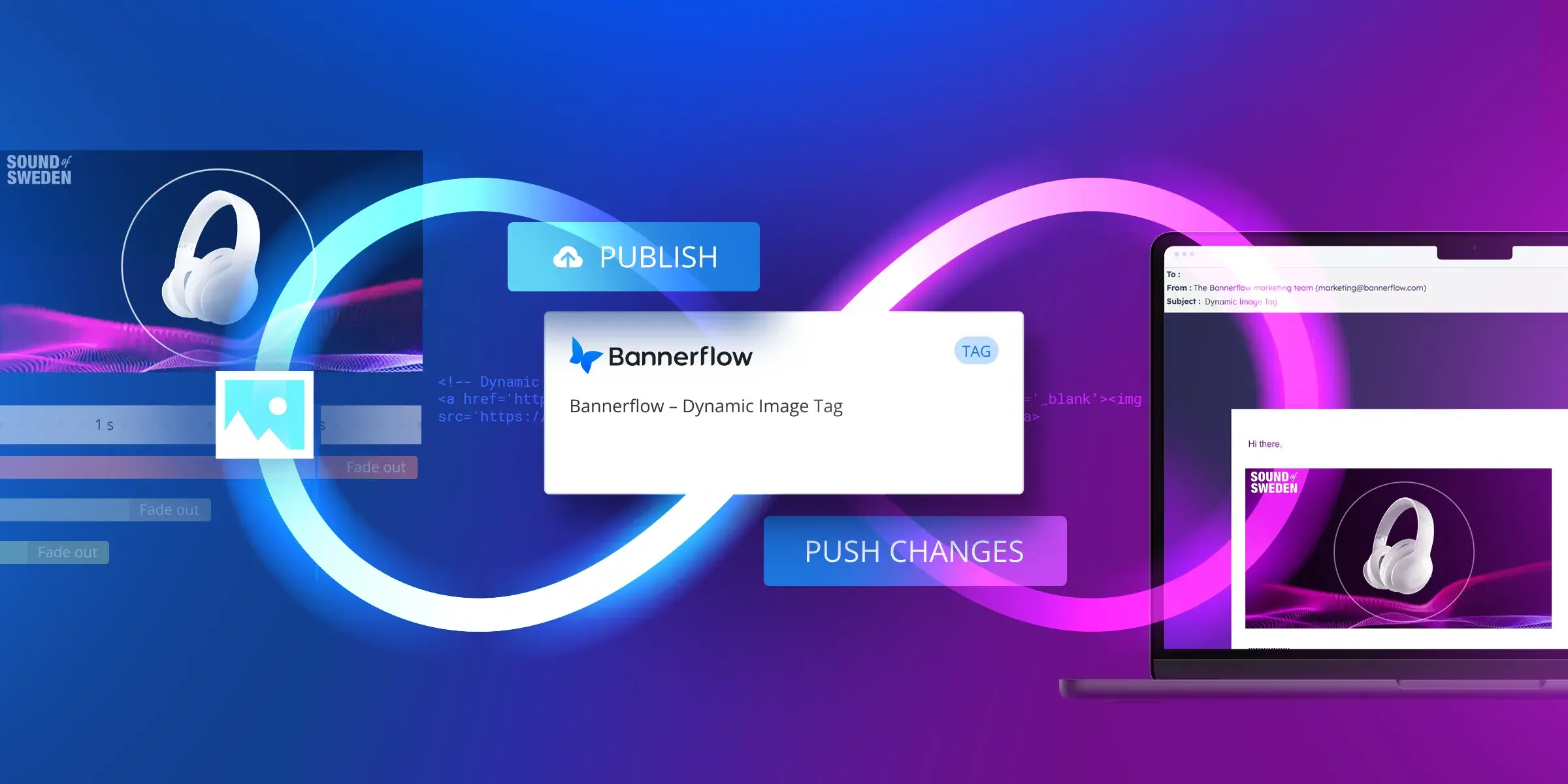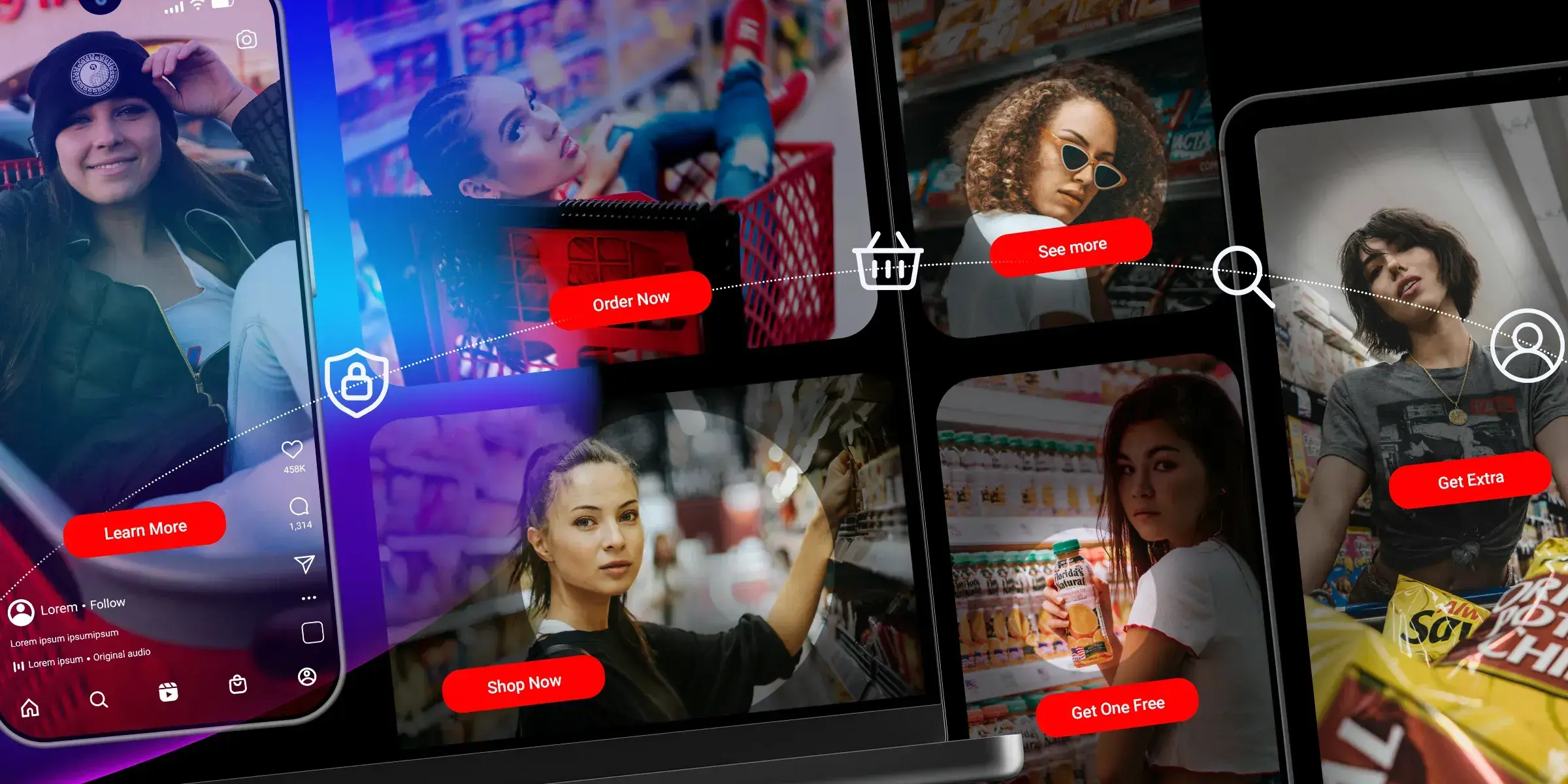Personalisation is no longer a nice to have but the standard when it comes to connecting with existing or potential customers. The average person is bombarded with an unprecedented amount of messages and advertisements daily as businesses employ new and innovative ways to communicate with audiences. To stand out and connect to prospects or customers, it has become essential for businesses to move away from generic communication and transition towards more relevant, personalised experiences.
What are Dynamic Image Tags and How Do They Work?
Before we dive into the benefits of dynamic image tags let’s get a better understanding of what they are and how they work. Dynamic Image tags are a simple yet powerful tool for displaying dynamic content you can use, for example, you can use them to embed an image into a webpage, allowing users to click on it to be directed to a specific URL or use it within an email to display content based on the recipient's profile, behaviours, and preferences. The use of dynamic image tags helps marketers move away from the use of static images, which are the same for all recipients, and provide the ability to present each recipient with a unique visual tailored to their specific interests and needs.
Dynamic Image Tags and Email Marketing
The use of email marketing has long been a key tactic within digital marketing across various industries. The emergence of other digital platforms in recent years has led to the assumption that email is dying. This could not be more untrue with the global value of email marketing growing year on year and expected to reach $17.9 billion by 2027. However, as the expectations of customers change it's also essential for businesses looking to utilise email marketing to evolve their. One of the best techniques to use is to incorporate dynamic content to create a more personalised experience for the customers. Dynamic image tags, in particular, are a valuable tool for marketers who are looking to incorporate varied visual content depending on the needs and expectations of the person receiving the email. By leveraging dynamic image tags to personalise email content, marketers can create compelling email campaigns that resonate deeply with recipients, driving higher engagement, improving customer satisfaction, and ultimately boosting conversion rates.
Let's explore how dynamic image tags can increase engagement, improve customer experience, and boost conversion rates.

The Process of Using Dynamic Image Tags in Emails
When incorporating dynamic image tags into your email campaigns, there are several things to consider to ensure that this approach works as successfully as it can.
Let’s break down the correct process to take advantage of dynamic image tags.
- Data Collection: To truly take advantage of the benefits of dynamic image tags, it is important to utilise audience data for a tailored experience. The typical type of data that you should look into should include demographics, past purchases, browsing history, and engagement with previous emails.
- Segmentation: Once this data is collected, you need to segment the users into a variety of groups that are aligned with their shared characteristics and behaviours. For example, if you’re an e-commerce brand that sells clothing, you can utilise data to create category-specific segmentation or be even more granular by differentiating users based on styles most frequently brought within a specific category.
- Dynamic Content Creation: The next step within the process is to create a variety of content that is aimed at engaging your audience segments based on their interests. This is where you incorporate your dynamic image tags by embedding them into your email template and linking them to these image variations.
- Personalised Delivery: Once the email is sent, the dynamic image tags get to work by pulling the relevant image from the server based on the profile of the recipient. This makes sure that each individual is shown content that is relevant to them, thereby enhancing the likelihood of them engaging with the email.
- Real-Time Adjustments: One of the core benefits of using dynamic image tags is how they allow you to make real-time updates to your content based on changing data, human error or other factors. For example, say during a busy sales period the item you’ve displayed to one segment has sold out, and the tag can automatically switch to showing a similar available product.
Benefits of Dynamic Image Tags in Email
There are many benefits to creating a more personalised experience for your audience when communicating on any digital platform and email is no different. Here are some of the core benefits you can expect when using dynamic image tags in email marketing.
- Increased Engagement: Dynamic content and personalisation significantly boost engagement rates. By providing content that is relevant and tailored to individual recipients, you can capture their interest more effectively. Utilising Dynamic Image Tags in your emails can expand your customer engagement and ensure that you create marketing that is consistently personalised and up-to-date across all your touchpoints.
- Enhanced Customer Experience: Personalised emails make your customers feel valued and understood. When customers receive emails that address their specific needs and preferences, they are more likely to develop a positive perception of your brand. This personal touch can lead to increased customer loyalty and retention. Dynamic image tags play a crucial role in ensuring relevance by automatically displaying images that are pertinent to the recipient’s profile, thereby enhancing the overall customer experience.
- Higher Conversion Rates: One of the most compelling benefits of using dynamic content and personalisation is the potential for higher conversion rates. Personalised emails that present the right message at the right time can significantly influence purchasing decisions. The development of dynamic image tags aims to achieve higher conversion rates by delivering relevant and timely content that encourages action. When customers see images that align perfectly with their interests and needs, they are more likely to engage and convert.
- Effective A/B Testing: Implementing dynamic content allows for more effective A/B testing. By testing different versions of your emails with varying content, you can determine what resonates best with your audience. This continuous optimisation helps refine your email marketing strategy to maximise effectiveness. A/B testing is an important factor in optimising your campaigns for better performance. Dynamic image tags can be a critical component in these tests, helping to identify the most impactful visuals.
Conclusion
To conclude, taking a multichannel approach to using dynamic content is no longer optional, it is an essential technique for differentiating your brand and building affinity with your prospects and customers. Using Dynamic image tags ensures that this tactic can also be incorporated into your email marketing strategy, giving you a more engaging way to communicate with your audience based on their preferences.
Learn more about Dynamic Image Tags on Bannerflow today.









